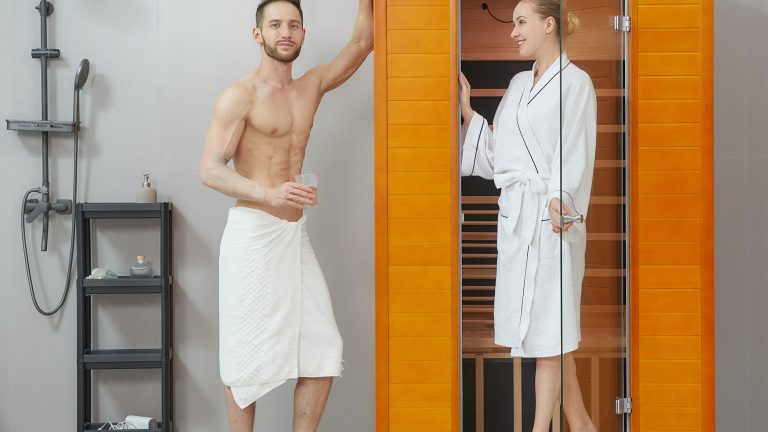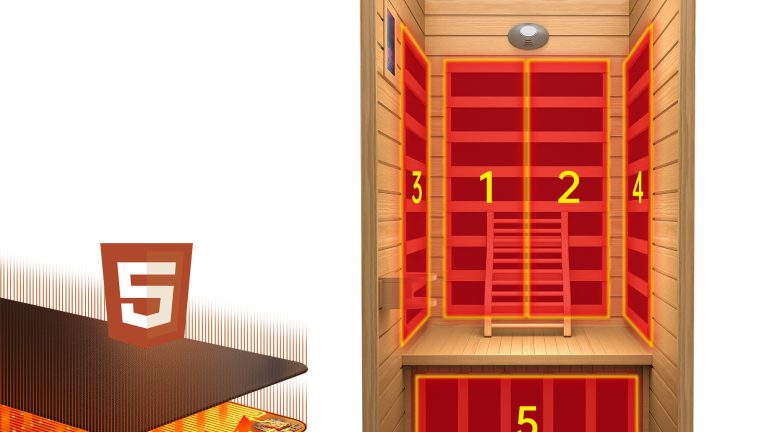If you’ve been looking into saunas for some health and relaxation benefits, you might have come across the terms “infrared cabin” and “traditional sauna.” While both offer the same goal—helping you relax and detox—there are some key differences between them. If you’re wondering what sets an infrared cabin apart from a traditional sauna, you’re not alone. Both can provide a great way to unwind, but their design, heating method, and overall experience are quite different.
Let’s break down what makes these two types of saunas distinct and help you decide which one might be right for you.
How They Heat Your Body
The biggest difference between an infrared sauna and a traditional sauna lies in how they heat you up.
Traditional Sauna: A traditional sauna relies on either dry heat or steam to raise the temperature of the air inside the cabin. The heat from the air warms your body, which means the air temperature can get very hot—typically ranging from 150°F to 195°F (65°C to 90°C). The high heat can sometimes feel overwhelming, especially for people who are not used to extreme temperatures. In a traditional sauna, you might also add water to heated rocks to create steam, which increases humidity and gives you that classic sauna feel.
Infrared Cabin: In contrast, an infrared cabin uses infrared light to directly heat your body. Instead of heating the air, infrared saunas use infrared heaters that emit light waves, which penetrate the skin and warm your muscles and tissues directly. This method can heat you more deeply without needing the air temperature to be as high. Infrared saunas generally operate at lower temperatures, typically around 120°F to 150°F (49°C to 66°C). This makes it a more comfortable experience for some people because the air isn’t as hot, but you still feel the heat from the infrared rays.
The Experience
Traditional Sauna: The experience in a traditional sauna is all about the intense heat, whether dry or steamy. It can be a bit of a shock to the system when you first enter, but many people find it invigorating. Traditional saunas typically involve sitting on benches inside a small, enclosed room, and the heat can be pretty intense, especially if you’re using the steam option. The air around you can feel heavy, and you may sweat a lot as your body tries to regulate its temperature.
Infrared Cabin: The experience in an infrared sauna is quite different. Since the air isn’t as hot, you may find it more comfortable to spend longer periods of time inside. The heat you feel in an infrared cabin feels more like a warm, soothing sensation that you can enjoy without feeling overwhelmed by the temperature. You’ll sweat as your body heats up from the inside out, and some people even describe it as a more relaxing and therapeutic experience than the dry heat of a traditional sauna. Many people enjoy the gentler heat because it allows them to stay in the sauna longer, which means more time to unwind and reap the benefits.
Health Benefits
Both infrared saunas and traditional saunas offer great health benefits, but because of their different heating methods, the way they affect your body can vary.
Traditional Sauna: Traditional saunas help with muscle relaxation, stress relief, and improved circulation due to the intense heat. The high temperatures can also help open pores, which is great for detoxifying your skin. It’s also known to help promote relaxation and improve cardiovascular health. However, because the heat is coming from the air, you might not experience the same deep tissue heat as you would with an infrared sauna.
Infrared Cabin: An infrared cabin offers many of the same benefits, but the infrared heat penetrates deeper into your muscles and tissues. This can make infrared saunas more effective for muscle recovery and pain relief because the heat reaches deeper layers of your body. The infrared rays can also help increase circulation, improve joint flexibility, and promote detoxification. Many people with chronic pain, like those with arthritis or muscle stiffness, find infrared saunas particularly helpful. Plus, since the air temperature is lower, you might feel more comfortable staying in the sauna for longer periods, which can give you even more health benefits.
One brand that stands out in the infrared sauna market is Real Relax infrared sauna. Their saunas use infrared light technology to provide a deeply relaxing experience with numerous health benefits, from improved circulation to better skin.
Space and Design
Another difference between an infrared sauna and a traditional sauna is the space and design.
Traditional Sauna: Traditional saunas are typically made of wood and need to be installed in a dedicated space, like a bathroom or a specially designed room. They require good ventilation and tend to be larger in size. Some traditional saunas can be quite bulky, which means they take up a fair amount of space. They also require a proper power source, especially if you’re using an electric sauna or a wood-burning stove.
Infrared Cabin: An infrared cabin is usually smaller, more compact, and more portable. These saunas are often designed for home use and are available in various sizes. Some indoor infrared saunas are designed to be placed in a corner of a room or even stored when not in use. They can be easier to set up than traditional saunas, and many models are portable. This makes them a great option for people who don’t want to commit to a large, permanent installation.
Heating Time
Traditional Sauna: Since a traditional sauna relies on heating the air inside the cabin, it can take a while to reach the desired temperature. You’ll need to wait for the sauna to heat up, which can take anywhere from 15 to 30 minutes, depending on the type of sauna.
Infrared Cabin: An infrared sauna, on the other hand, heats up much faster. Since the infrared heaters directly heat your body, the air doesn’t need to reach the same high temperatures. As a result, an infrared sauna can be ready for use in just a few minutes. If you’re short on time and want a quick session, an infrared sauna can be a more efficient option.
Cost
Traditional Sauna: Traditional saunas, especially those made from high-quality wood, tend to be more expensive. In addition to the higher initial cost, there may be installation fees and maintenance costs to consider.
Infrared Cabin: Infrared cabins tend to be more affordable, especially when you factor in the lower installation and maintenance costs. If you’re looking for a more budget-friendly sauna option, an infrared sauna might be the way to go. Plus, the energy usage is generally lower, as they heat up quickly and use less power to operate compared to traditional saunas.
When it comes to choosing between an infrared cabin and a traditional sauna, it really depends on what you’re looking for in your sauna experience. If you enjoy the classic sauna experience with high temperatures and steam, a traditional sauna might be the right fit. However, if you prefer a more comfortable, gentle heat with the option for deeper muscle relaxation and quicker setup, an infrared sauna could be the better choice for you.
Brands like Real Relax infrared sauna offer a variety of infrared cabins with features that make them a great option for those who want to enjoy the benefits of sauna therapy at home without the heat and humidity of a traditional sauna. Whether you go for an infrared sauna or a traditional one, both offer great health benefits—so it’s really up to your personal preference.



